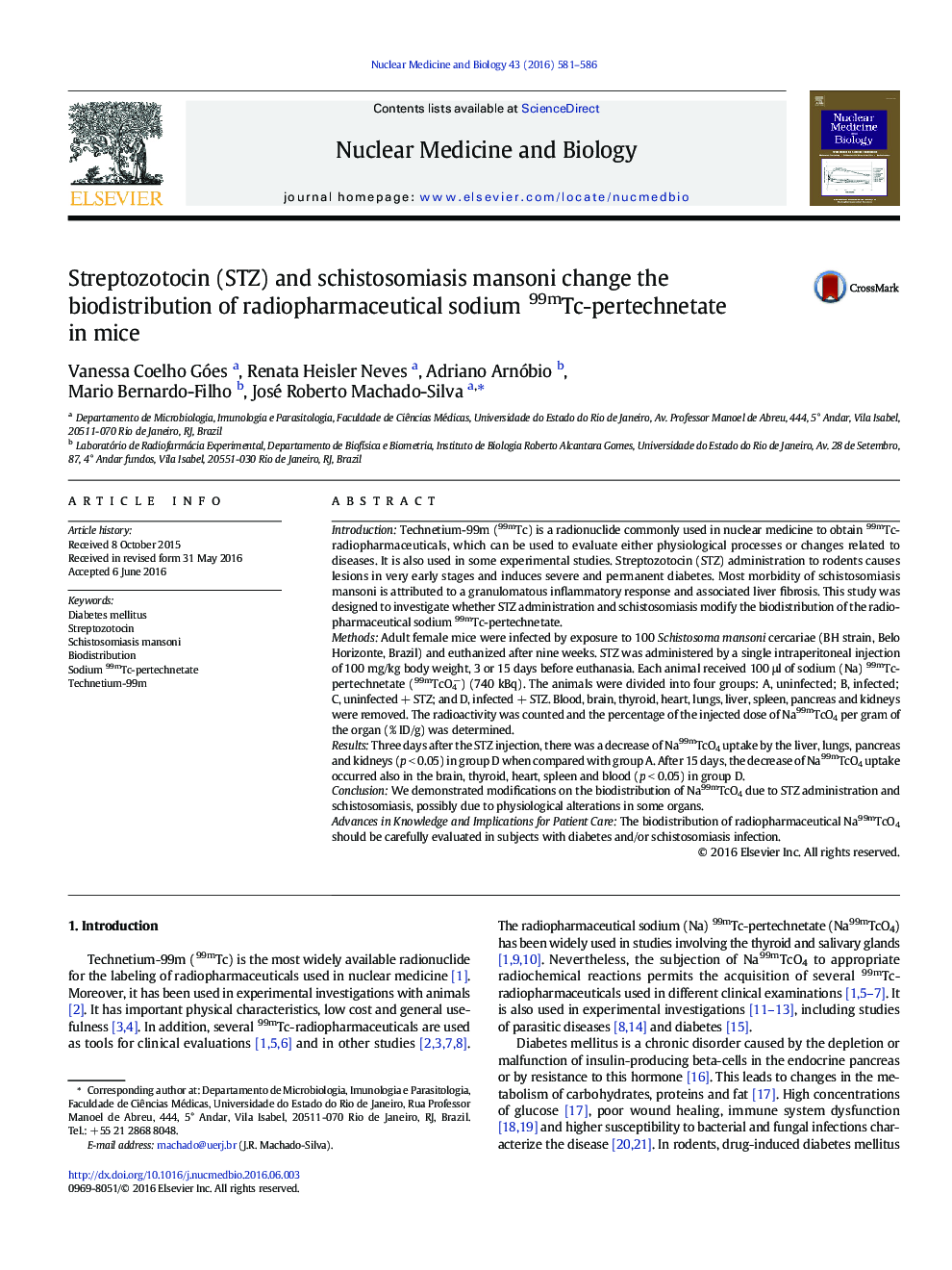| کد مقاله | کد نشریه | سال انتشار | مقاله انگلیسی | نسخه تمام متن |
|---|---|---|---|---|
| 2153346 | 1090170 | 2016 | 6 صفحه PDF | دانلود رایگان |
IntroductionTechnetium-99m (99mTc) is a radionuclide commonly used in nuclear medicine to obtain 99mTc-radiopharmaceuticals, which can be used to evaluate either physiological processes or changes related to diseases. It is also used in some experimental studies. Streptozotocin (STZ) administration to rodents causes lesions in very early stages and induces severe and permanent diabetes. Most morbidity of schistosomiasis mansoni is attributed to a granulomatous inflammatory response and associated liver fibrosis. This study was designed to investigate whether STZ administration and schistosomiasis modify the biodistribution of the radiopharmaceutical sodium 99mTc-pertechnetate.MethodsAdult female mice were infected by exposure to 100 Schistosoma mansoni cercariae (BH strain, Belo Horizonte, Brazil) and euthanized after nine weeks. STZ was administered by a single intraperitoneal injection of 100 mg/kg body weight, 3 or 15 days before euthanasia. Each animal received 100 μl of sodium (Na) 99mTc-pertechnetate (99mTcO4−) (740 kBq). The animals were divided into four groups: A, uninfected; B, infected; C, uninfected + STZ; and D, infected + STZ. Blood, brain, thyroid, heart, lungs, liver, spleen, pancreas and kidneys were removed. The radioactivity was counted and the percentage of the injected dose of Na99mTcO4 per gram of the organ (% ID/g) was determined.ResultsThree days after the STZ injection, there was a decrease of Na99mTcO4 uptake by the liver, lungs, pancreas and kidneys (p < 0.05) in group D when compared with group A. After 15 days, the decrease of Na99mTcO4 uptake occurred also in the brain, thyroid, heart, spleen and blood (p < 0.05) in group D.ConclusionWe demonstrated modifications on the biodistribution of Na99mTcO4 due to STZ administration and schistosomiasis, possibly due to physiological alterations in some organs.Advances in Knowledge and Implications for Patient CareThe biodistribution of radiopharmaceutical Na99mTcO4 should be carefully evaluated in subjects with diabetes and/or schistosomiasis infection.
Journal: Nuclear Medicine and Biology - Volume 43, Issue 9, September 2016, Pages 581–586
